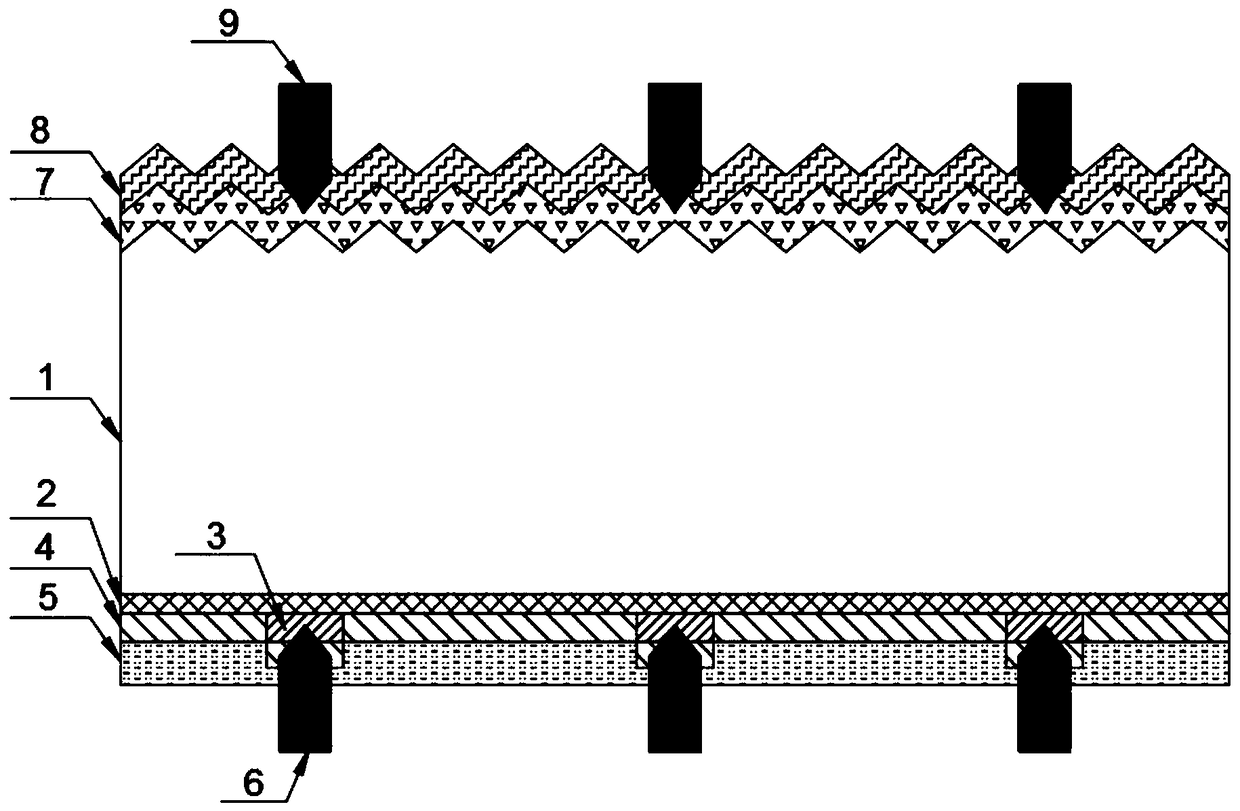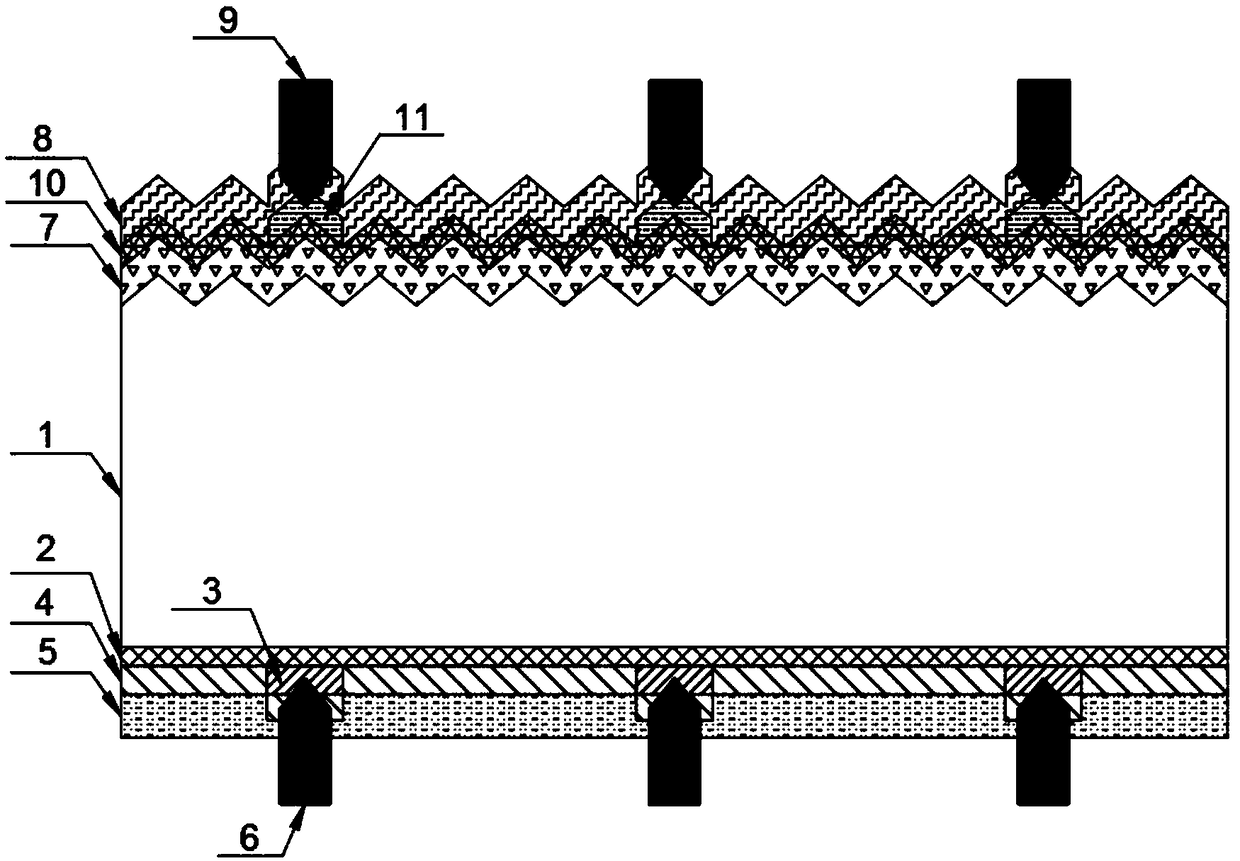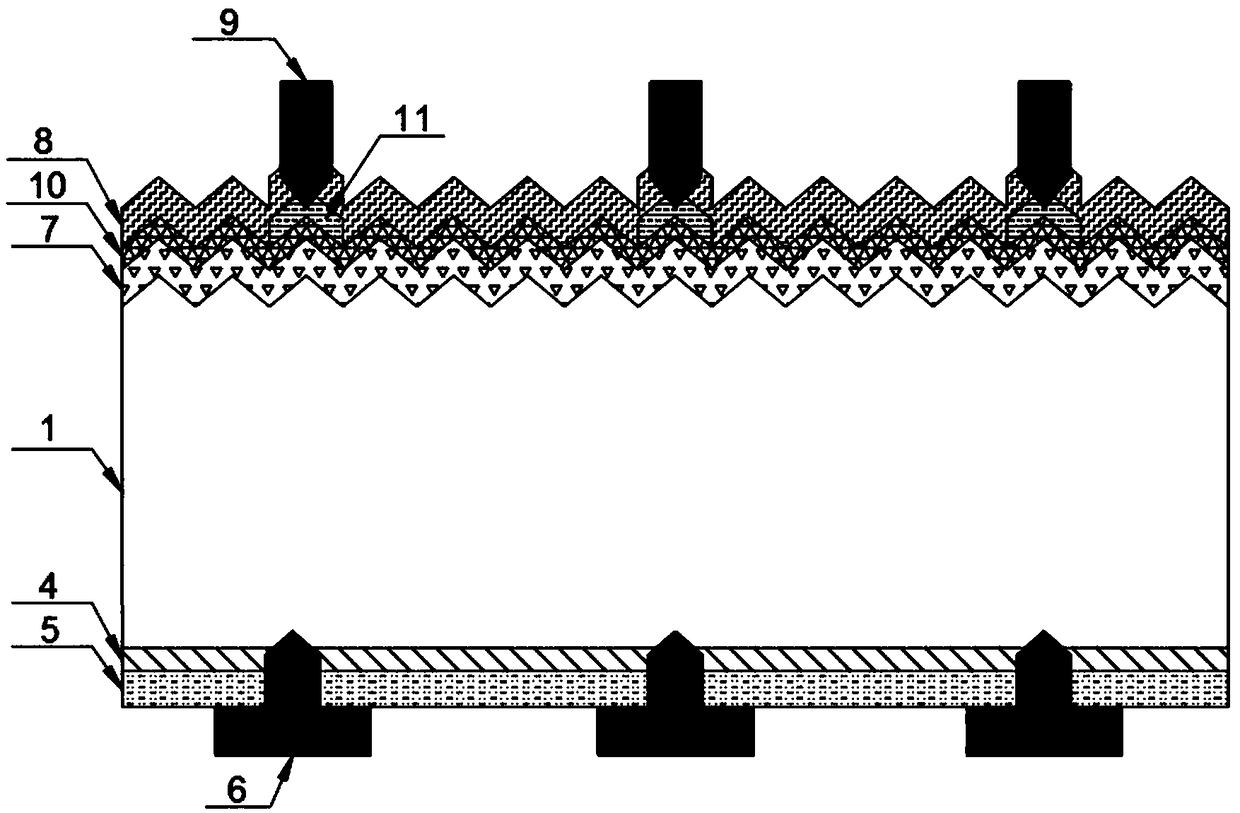Silicon-based solar cell, preparation method and photovoltaic module
A solar cell, silicon-based technology, applied in the field of solar cells, can solve the problems of reducing cell photoelectric conversion efficiency, photoelectric conversion performance dependence, solar cell voltage and current loss, etc.
- Summary
- Abstract
- Description
- Claims
- Application Information
AI Technical Summary
Problems solved by technology
Method used
Image
Examples
Embodiment approach 1
[0141] like figure 1 As shown, in this embodiment, the front side of the silicon-based solar cell includes:
[0142] The emitter layer 7 arranged on the front surface of the P-type crystalline silicon substrate 1,
[0143] an anti-reflection layer 8 disposed on the emitter layer 7,
[0144] as well as,
[0145] A front electrode 9 disposed on the anti-reflection layer 8 .
[0146] Wherein, the front electrode 9 is in ohmic contact with the emitter layer 7 through the anti-reflection layer 8 .
[0147] It can be understood that the emitter layer 7 is N-type silicon, which can be formed by doping the P-type crystalline silicon substrate 1 with group V elements (including but not limited to phosphorus). In this embodiment, the sheet resistance value of the emitter layer 7 formed after doping can be 40Ω / □~200Ω / □ (such as 40Ω / □, 50Ω / □, 60Ω / □, 70Ω / □, 80Ω / □, 90Ω / □ / □, 100Ω / □, 110Ω / □, 120Ω / □, 130Ω / □, 140Ω / □, 150Ω / □, 160Ω / □, 170Ω / □, 180Ω / □, 190Ω / □, 200Ω / □, etc.), emission The she...
Embodiment approach 2
[0151] like figure 2 As shown, in this embodiment, the front side of the silicon-based solar cell includes:
[0152] The emitter layer 7 arranged on the front surface of the P-type crystalline silicon substrate 1,
[0153] a front tunneling passivation layer 10 arranged on the emitter layer 7,
[0154] a group V element-doped front-side doped silicon layer 11 disposed on a partial region of the front-side tunneling passivation layer 10,
[0155] anti-reflection layer 8 disposed on the front-side doped silicon layer 11 and on the region of the front-side tunneling passivation layer 10 where the front-side doped silicon layer 11 is not provided, and,
[0156] A front electrode 9 disposed on the anti-reflection layer 8 .
[0157] Wherein, the front electrode 9 is in ohmic contact with the front doped silicon layer 11 through the antireflection layer 8 .
[0158] In this embodiment, the structures of the emitter layer 7 , the anti-reflection layer 8 and the front electrode 9 ...
Embodiment 1
[0234] This embodiment provides a silicon-based solar cell passivated by gallium oxide, such as figure 1 As shown, the solar cell includes a P-type crystalline silicon substrate 1, an emitter layer 7 arranged on the front of the P-type crystalline silicon substrate 1, an antireflection layer 8 arranged on the emitter layer 7, and an antireflection layer 8 arranged on the antireflection layer 8. The front electrode 9 is arranged on the back tunnel passivation layer 2 on the back of the P-type crystalline silicon substrate 1, and the back doped polysilicon layer doped with boron element is arranged on the back tunnel passivation layer 2 corresponding to the region of the back electrode 6, The gallium oxide layer 4 arranged on the back doped polysilicon layer and the region of the back tunnel passivation layer 2 not provided with the back doped polysilicon layer, the covering layer 5 arranged on the gallium oxide layer 4, and the covering layer 5 arranged on the covering layer 5 ...
PUM
 Login to View More
Login to View More Abstract
Description
Claims
Application Information
 Login to View More
Login to View More - R&D
- Intellectual Property
- Life Sciences
- Materials
- Tech Scout
- Unparalleled Data Quality
- Higher Quality Content
- 60% Fewer Hallucinations
Browse by: Latest US Patents, China's latest patents, Technical Efficacy Thesaurus, Application Domain, Technology Topic, Popular Technical Reports.
© 2025 PatSnap. All rights reserved.Legal|Privacy policy|Modern Slavery Act Transparency Statement|Sitemap|About US| Contact US: help@patsnap.com



